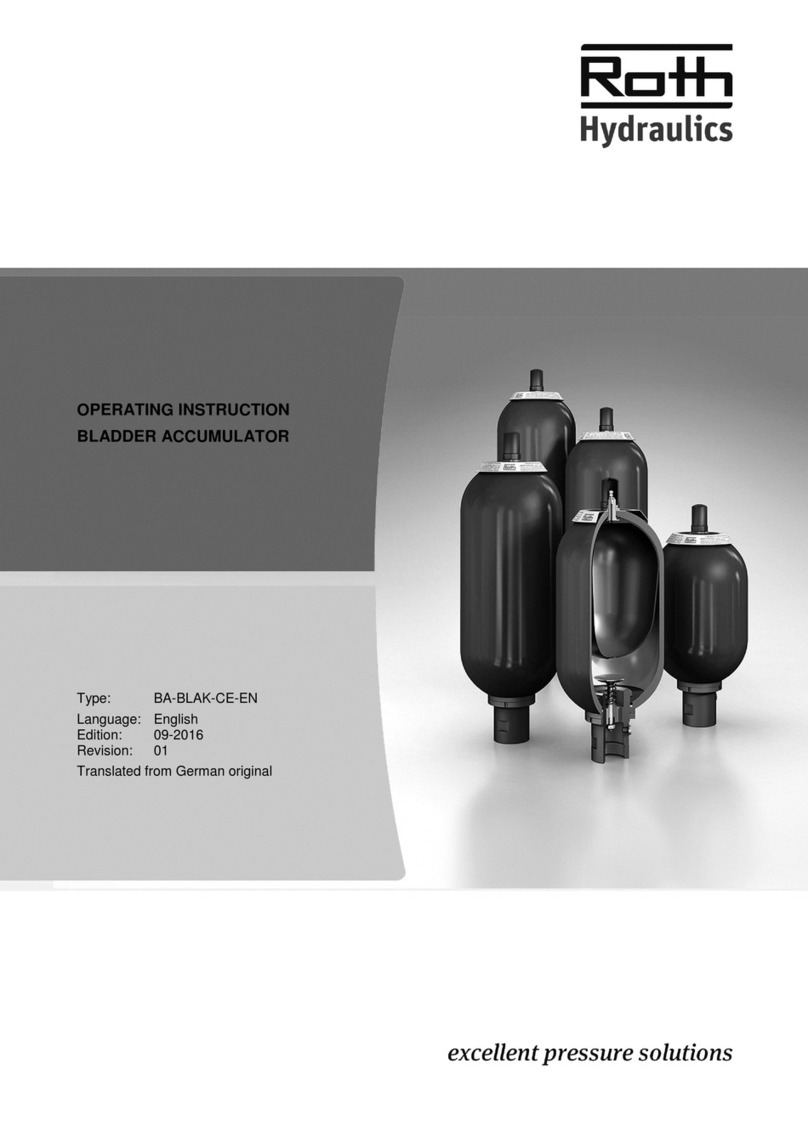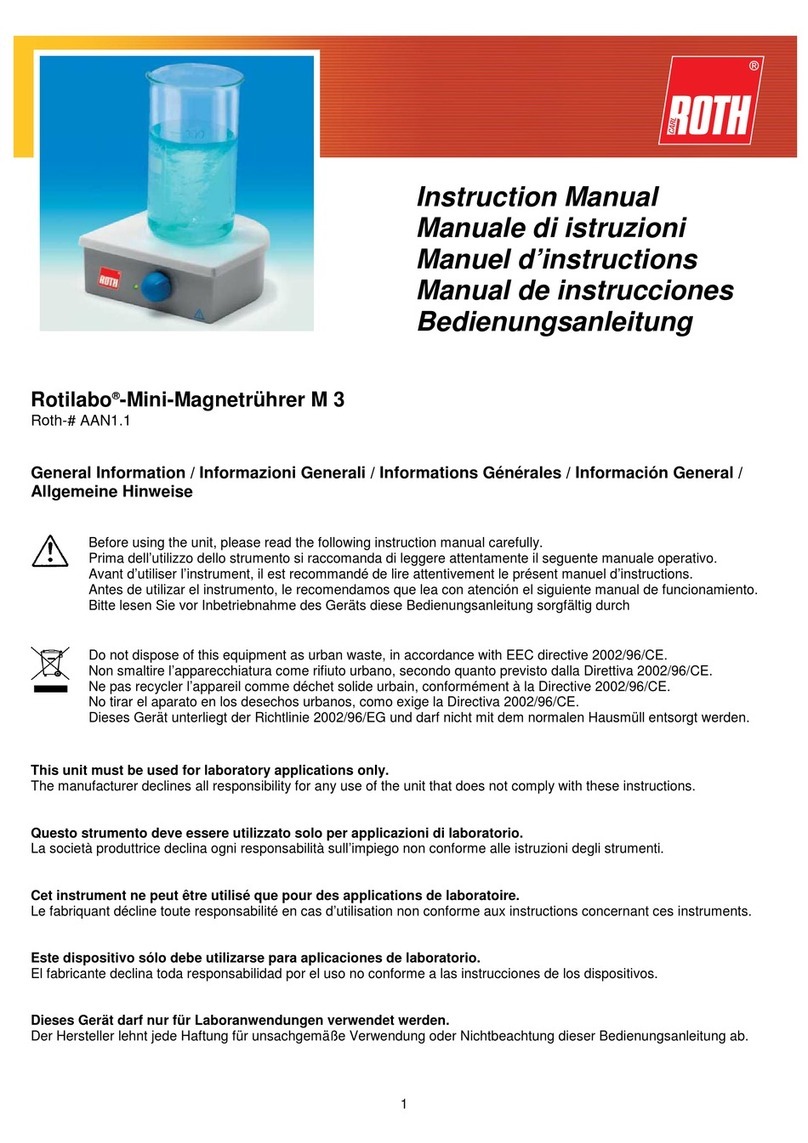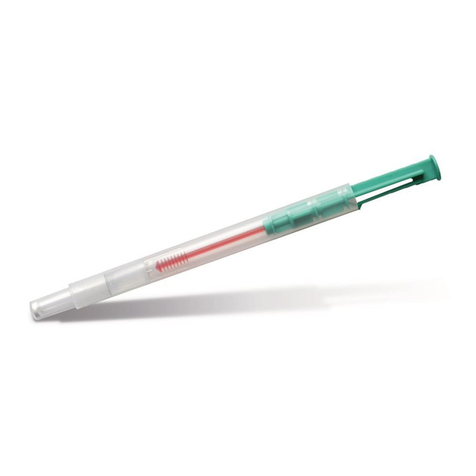
Operating instruction piston accumulator UAK - English
1
0 Contents
0.1 Table of Contents
0
Contents____________________________________________________________________ 1
0.1
Table of Contents_____________________________________________________________ 1
0.2
Table of figures_______________________________________________________________ 1
1
Designated application_________________________________________________________ 2
1.1
Overview of standard Roth pressure equipment _____________________________________ 2
1.2
Notes on designated application _________________________________________________ 3
2
Function ____________________________________________________________________ 4
2.1
General functional description ___________________________________________________ 4
2.2
Filling and testing the pressure equipment _________________________________________ 4
2.2.1
Isochore behavior of N2________________________________________________________ 5
3
Safety______________________________________________________________________ 6
3.1
Notes / Explanations __________________________________________________________ 6
3.2
Identification / Nameplate_______________________________________________________ 6
3.3
Safety systems_______________________________________________________________ 6
3.4
Safety precautions ____________________________________________________________ 6
3.5
Responsibilities of the operator __________________________________________________ 7
4
Dangers ____________________________________________________________________ 8
4.1
General hazard notes__________________________________________________________ 8
4.2
Installation of spare and wearing parts ____________________________________________ 8
4.3
Cleaning, maintenance and repair work ___________________________________________ 8
5
Installation __________________________________________________________________ 8
5.1
Scope of delivery _____________________________________________________________ 8
5.2
Transport and packaging _______________________________________________________ 9
5.3
Storage_____________________________________________________________________ 9
5.4
Assembly / Commissioning ____________________________________________________ 10
6
Maintenance________________________________________________________________ 11
6.1
General maintenance notes____________________________________________________ 11
6.2
Periods of repeated inspection__________________________________________________ 11
7
Disturbance, causes, troubleshooting (qualified staff only) ____________________________ 12
8
Emergencies _______________________________________________________________ 12
9
Dissembling / disposal ________________________________________________________ 12
Notes __________________________________________________________________________ 13
0.2 Table of figures
Figure 1-1 Overview of standard Roth pressure equipment _____________________________ 2
Figure 2-1 Isochore behavior of N2 ________________________________________________ 5
































